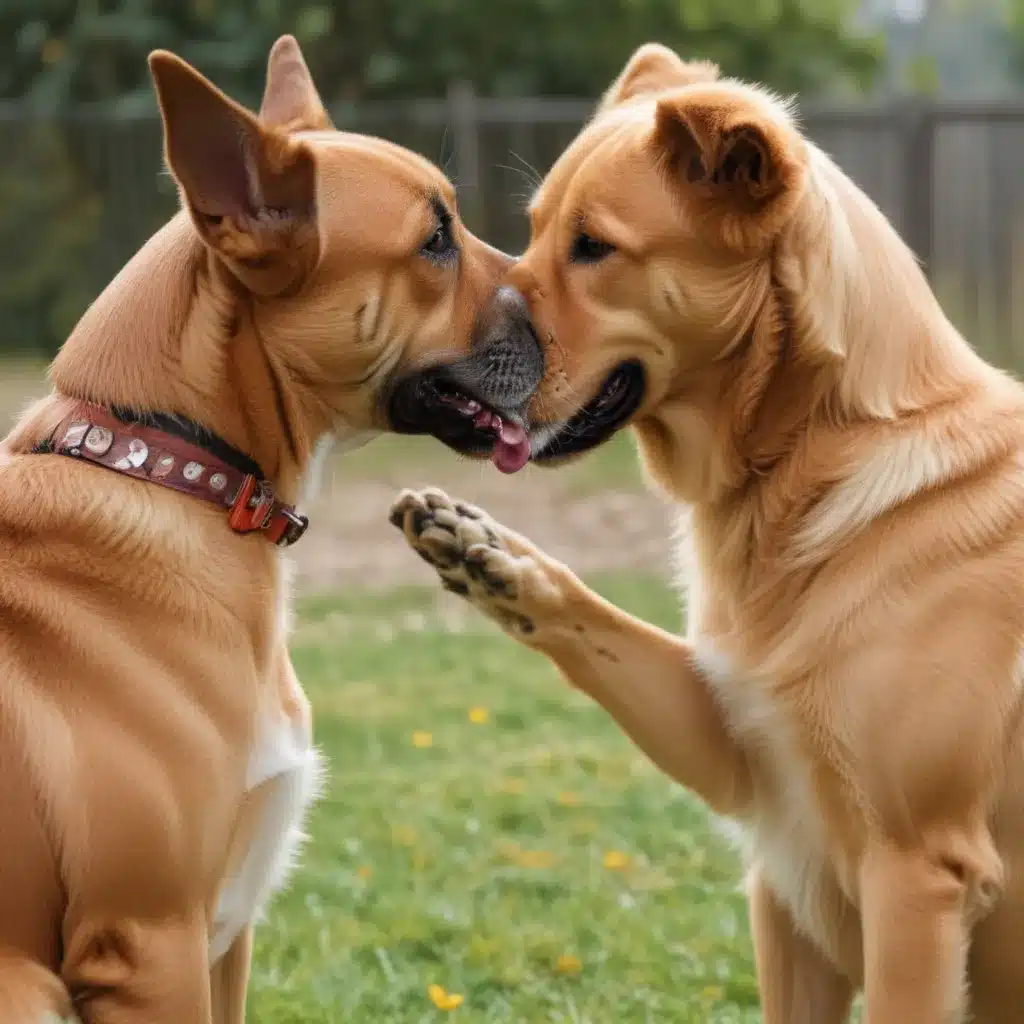
Canine Etiquette 101: The Art of Dog-to-Dog Greetings
As a proud dog parent, I know how exciting it can be when your furry friend meets a new canine companion. The wagging tails, curious sniffs, and potential for a budding friendship – it’s all so heartwarming. But you know what they say, you never get a second chance to make a first impression. And when it comes to dog-to-dog introductions, those initial moments are crucial.
You see, I used to think letting my dog Rufus greet every pup we passed was harmless fun. Boy, was I in for a rude awakening. One day, Rufus bounded up to a rather grumpy-looking German Shepherd, only to end up with a nasty bite on his nose. Turns out, that pup wasn’t too keen on strange dogs invading his personal space. Lesson learned the hard way!
PetMD explains that dogs have a very specific way of greeting each other, usually approaching from the side and sniffing the rear end. When we force a face-to-face introduction, it can come across as rude or even threatening to our canine companions. And just like us humans, not every dog is going to want to be best friends.
Leash Greetings: A Recipe for Disaster?
One of the biggest mistakes I see pet owners make is allowing their dogs to greet each other while on leash. Smart Dog University explains that this can be a recipe for disaster. When dogs are constrained by leashes, they lose the freedom to retreat or disengage if they’re feeling uncomfortable. This can lead to frustration, tension, and in the worst-case scenario, an altercation.
Imagine if a stranger came running up to you, got right in your face, and demanded a hug. Chances are, you’d feel pretty darn uncomfortable, right? Well, that’s how a lot of dogs feel when forced into an on-leash greeting. They don’t have the ability to politely decline or create some personal space.
Setting the Stage for Success
So, how can you ensure your dog’s next meet-and-greet is a positive experience? The key is to let the dogs take the lead and set the pace. Best Friends Animal Society recommends starting the introduction off-leash, if possible, in a neutral location like a park or a friend’s backyard. This allows the dogs to approach each other cautiously, sniff, and decide for themselves if they want to engage in play or keep their distance.
If an off-leash intro isn’t an option, try keeping the leashes loose and giving the dogs plenty of space to move around. Avoid allowing them to greet face-to-face, as that can be seen as confrontational. Instead, let them approach from the side and sniff each other’s rear ends – the canine equivalent of a handshake.
And don’t forget to pay close attention to body language. Tail wagging, loose posture, and comfortable sniffing are all good signs. But stiff movements, growling, or avoidance might indicate one of the dogs is feeling uncomfortable. If that’s the case, it’s best to calmly separate them and try again another day.
Navigating the Challenges
I know what you’re thinking – what if your dog is a little on the, shall we say, enthusiastic side? Or maybe you’ve got a shy pup who gets nervous around new canine friends. Fear not, there are ways to navigate these challenges too.
For the overly exuberant dog, The Wildest suggests keeping the greetings short and sweet. Don’t let the excitement build to a fever pitch, as that can quickly lead to rude or inappropriate behavior. Redirect your pup’s attention with a treat or a toy, and then try again after a little cooling-off period.
And for the shy or anxious dog, a slower, more cautious approach is key. Let them observe the new dog from a distance first, then gradually decrease the space between them. Offer lots of praise and yummy rewards when they display calm, confident body language. Rome wasn’t built in a day, and neither is a dog’s social confidence.
The Power of Preparation
At the end of the day, a successful dog-to-dog greeting comes down to one crucial factor: preparation. Before you even think about introducing your pup to a new canine friend, do your homework. Get to know the other dog’s personality and energy level, and make sure your own furry companion is up for the challenge.
And don’t forget to set the stage for success. Choose a neutral, low-stress environment, keep those leashes loose, and pay close attention to those all-important body language cues. With a little planning and a whole lot of patience, you can help your dog navigate the intricate world of canine etiquette.
So the next time you spot a potential new buddy for your four-legged friend, don’t just dive in headfirst. Take a deep breath, slow things down, and let the dogs take the lead. After all, a little social finesse can go a long way in the canine community. Happy (and safe) sniffing, my fellow dog lovers!

